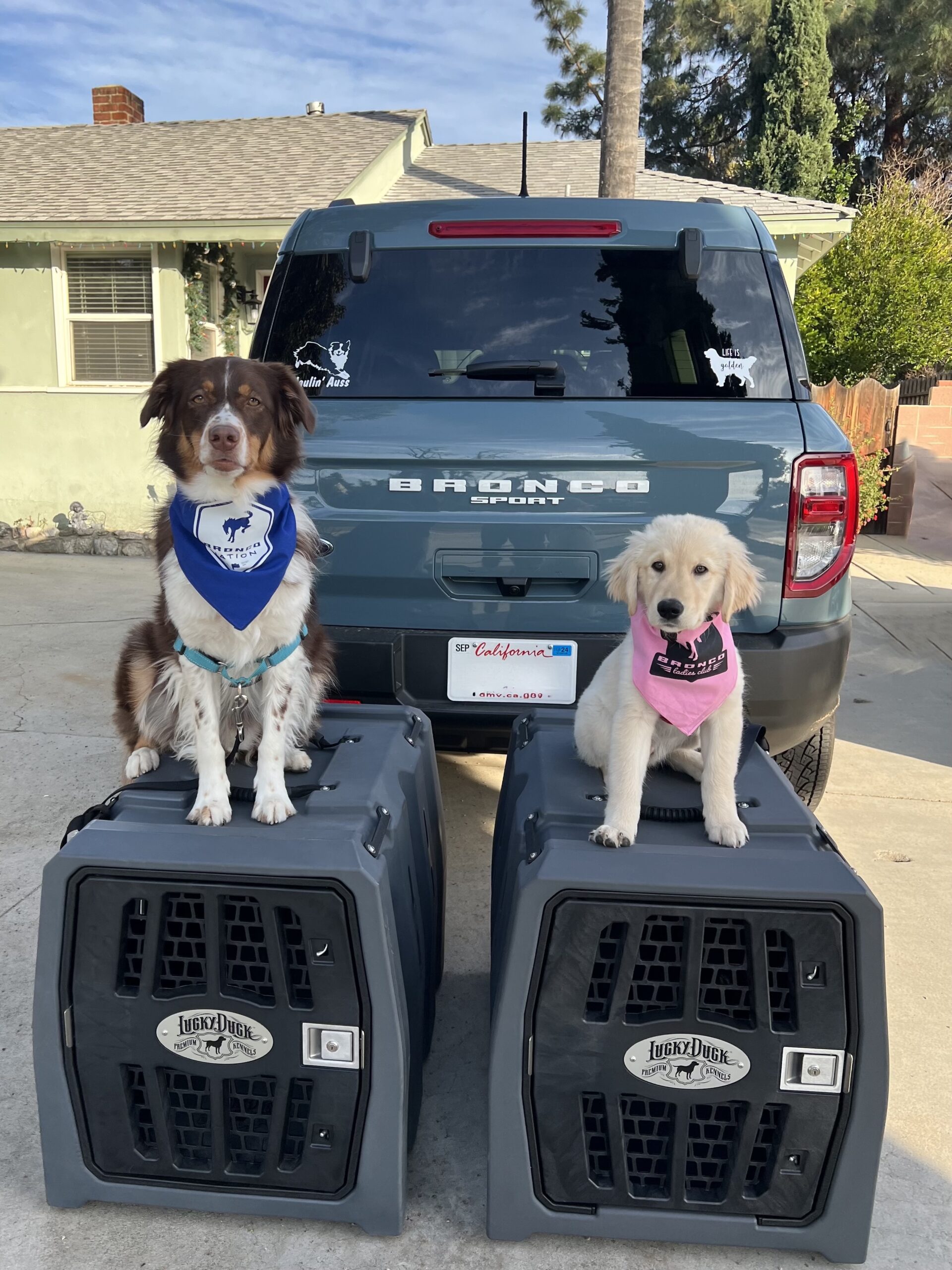Traveling with your pet can be fun and rewarding, but it’s crucial to ensure their safety during car rides. Whether you’re off to see the vet, heading to a park, or going on a road trip, your pet’s well-being should be a priority. Here’s how you can make every journey safe and comfortable for your best friend.

Why Pet Safety in Cars Matters
Living in a big city, we’ve been in several accidents with our dogs in the car. Because of that we will never go anywhere without practicing good pet vehicle safety habits.
Many pet owners may not realize that unrestrained pets can be as dangerous as unbuckled humans. Pets can become projectiles in accidents, potentially injuring themselves or others. Additionally, they can be a distraction, increasing the risk of accidents. By taking the right precautions, you can minimize these risks and keep your pet secure.
Top Tips for Keeping Your Pet Safe in the Car
1. Use a Pet Restraint or Carrier
Just like humans need seat belts, pets need restraints to stay safe in case of sudden stops or collisions. Depending on your pet’s size and preferences, you have options:
- Pet Carriers: Smaller dogs, cats, and other small pets are safest in a well-ventilated carrier that’s strapped to the seat or secured with a seat belt. Larger crates that are strapped to seat backs or tie-downs are ideal for medium and large dogs. Avoid wire carriers, as they can collapse during an impact. Our preference is for crash-test rated kennels for our dogs and standard hard-sided crates for our cats.
- Dog Car Harnesses: Designed for medium to large dogs, these harnesses are sturdy and designed to distribute force in the event of a crash.
- Dog Seat Belts: These attach to your dog’s harness (never a collar) and clip into the car’s seat belt slot.
Be sure to choose safety-approved products, which you can find in our recommended list of pet travel essentials.
2. Never Let Your Pet Sit in the Front Seat
Even though your pet may love sitting up front, it’s safer for them to ride in the back. In the event of an accident, the front airbags can cause severe injuries to pets. The safest spot is the back seat or the cargo area (in an SUV), especially when paired with a pet barrier or carrier.
3. Airflow
Pets need fresh air, but avoid letting them hang their heads out the window. Debris, bugs, or sudden stops can lead to injuries. Instead, run the A/C or crack the window just enough to let air flow in without allowing them to stick their heads out. Many vehicles feature a switch on the driver’s control panel that will disable the rear passenger window switches. It’s a good idea to utilize this feature to prevent your furry friend from accidentally opening a window too much or injuring themself closing it. We prefer running the A/C over cracking windows.
4. Take Breaks on Long Trips
If you’re driving long distances, make regular stops for your pet to stretch, hydrate, and do their business. This will help reduce stress for them and make the journey more comfortable. Keep a portable water bowl and extra leashes on hand for these pit stops. Also bear in mind that just like people, some pets can get carsick, so make sure to keep an eye on them and bring along cleaning supplies in case of an emergency.
Common Mistakes to Avoid
- Leaving Pets in the Car Alone: Never leave your pet unattended in a vehicle, especially in warm weather. Even on a mild day, cars can heat up quickly and pose a life-threatening danger.
- Unsecured Pets: Even if your pet is calm during car rides, they should still be restrained. In an accident, unrestrained pets can be seriously injured or harm passengers.
Best Pet Safety Products for the Road
When traveling, investing in quality safety products can make all the difference. Check out some of our top-recommended pet travel products:
- Pet Kennels: Perfect for pets of all types and sizes; our top choice in safety gear.
- Dog Car Harnesses and Seat Belts: Ensures safety and comfort.
- Car Seat Covers: Protects your vehicle from fur and dirt while keeping pets comfy.
Final Thoughts
Your pet is a beloved member of your family, and their safety in the car should be taken as seriously as your own. By using the proper restraints, carriers, and safety practices, you can ensure that every trip is a safe and enjoyable one for both you and your furry companion.
Remember: Safe travels mean happy tails! For more pet safety tips and product recommendations, follow Furward Trends on Pinterest and stay up-to-date with the latest in pet care trends.

Leave a Reply